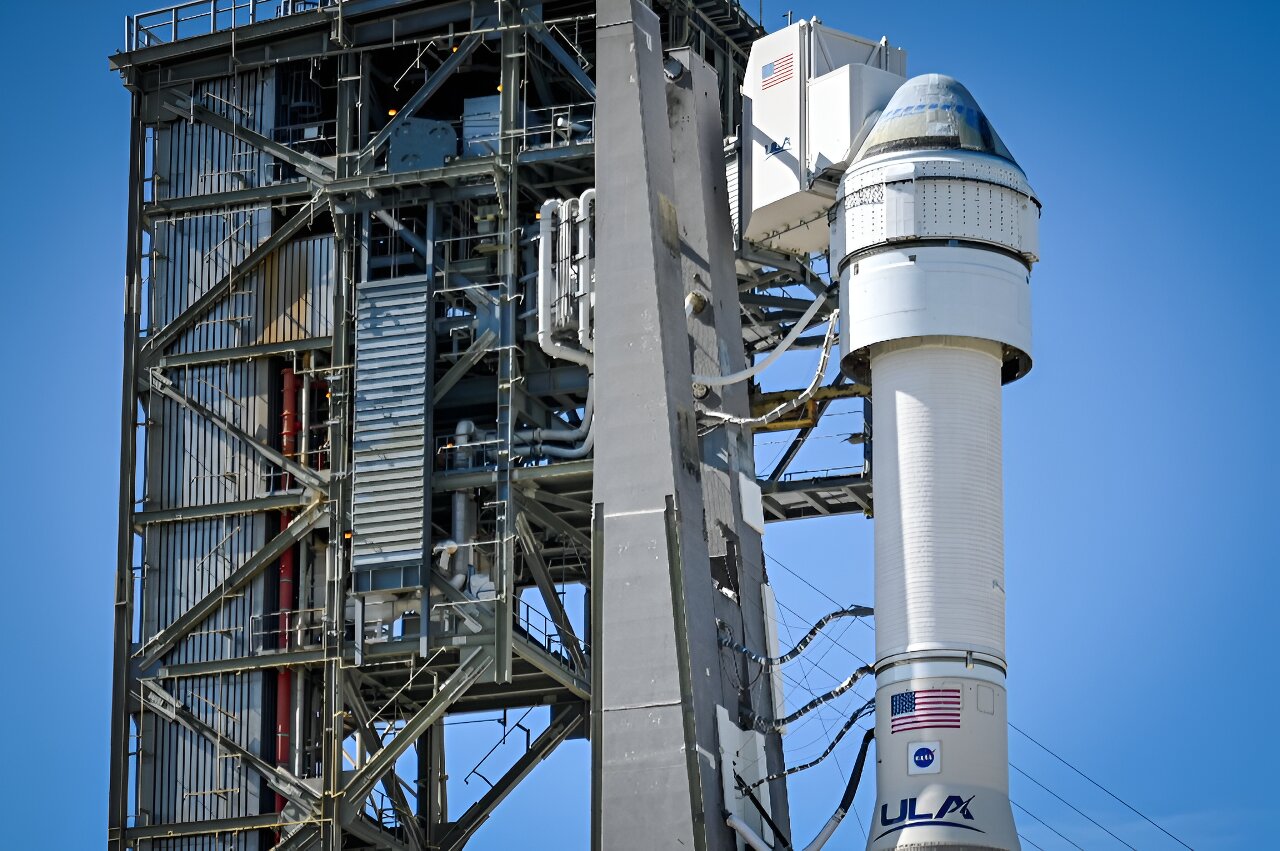Key Takeaways:
- Boeing plans a crewed Starliner launch in June with a small helium leak in the service module, deemed manageable by NASA.
- The mission has faced delays due to previous software issues and a faulty rocket valve. This leak adds to a history of problems.
- The decision to fly with the leak prioritizes safety by monitoring it closely and highlighting similar situations with space shuttles and SpaceX’s Dragon.
- A successful mission is crucial for NASA’s plan to certify a second crew transport option to the ISS.
- The launch comes amidst Boeing’s commercial aviation safety crisis, making a successful Starliner mission even more critical.
Boeing plans to launch its first crewed space mission in June without fixing a small helium gas leak on its troubled Starliner spaceship, officials announced Friday.
The vessel, which has been in development since 2010, has been plagued by technical problems and has yet to complete its mission of ferrying astronauts to the International Space Station, allowing Boeing’s competitor SpaceX to move ahead with its Crew Dragon capsule.
Starliner was supposed to transport astronauts Butch Wilmore and Suni Williams to the orbital outpost on May 6, but the mission was scrapped hours before launch due to a faulty valve on the United Launch Alliance rocket carrying it.
Since then, additional issues came to light, including a helium leak in the spacecraft’s service module, which houses the propulsion system.

Although the rocket valve has been replaced, Boeing and NASA have decided to fly to the ISS without replacing a shirt button-sized seal on a leaking joint, officials told reporters.
“We can handle this particular leak if that leak rate were to grow even up to 100 times,” said Steve Stich, manager of NASA’s Commercial Crew Program. Furthermore, it only impacts one of the 28 thrusters used to control the spaceship’s attitude, he said.
Instead, teams will monitor the leak in the hours resulting up to the launch, which is scheduled for June 1 at 12:25 p.m. (1625 GMT) from the Cape Canaveral Space Force Station in Florida.
When asked why Boeing would not simply replace the seal, Mark Nappi, the company’s vice president for the commercial crew program, said the process would be “quite involved” and would require separating the Starliner at its factory.
Stich went on to say that flying with leaks was not uncommon—space shuttles had similar issues at times, “and we’ve had a couple of cases with Dragon where we’ve had a few small leaks as well,” he said.
The long-delayed mission comes at a difficult time for Boeing, as a safety crisis engulfs the century-old aerospace titan’s commercial aviation arm.
NASA is counting on Starliner’s success to meet its goal of certifying a second commercial vehicle to transport crews to the ISS, which it has sought since the last space shuttle flight in 2011.
A successful mission would help to remove the bitter taste left by numerous setbacks in the Starliner program.
During the first uncrewed test flight in 2019, the capsule failed to rendezvous with the ISS due to a software defect. A second software bug could have resulted in a catastrophic collision between its modules, but it was detected and fixed just in time.
Then, in 2021, with the rocket on the launchpad for a new flight, blocked valves caused another postponement.
In a non-crewed launch, the vessel arrived at the International Space Station in May 2022. However, other issues such as weak parachutes and flammable tape in the cabin that needed to be removed caused additional delays in the crewed test.


